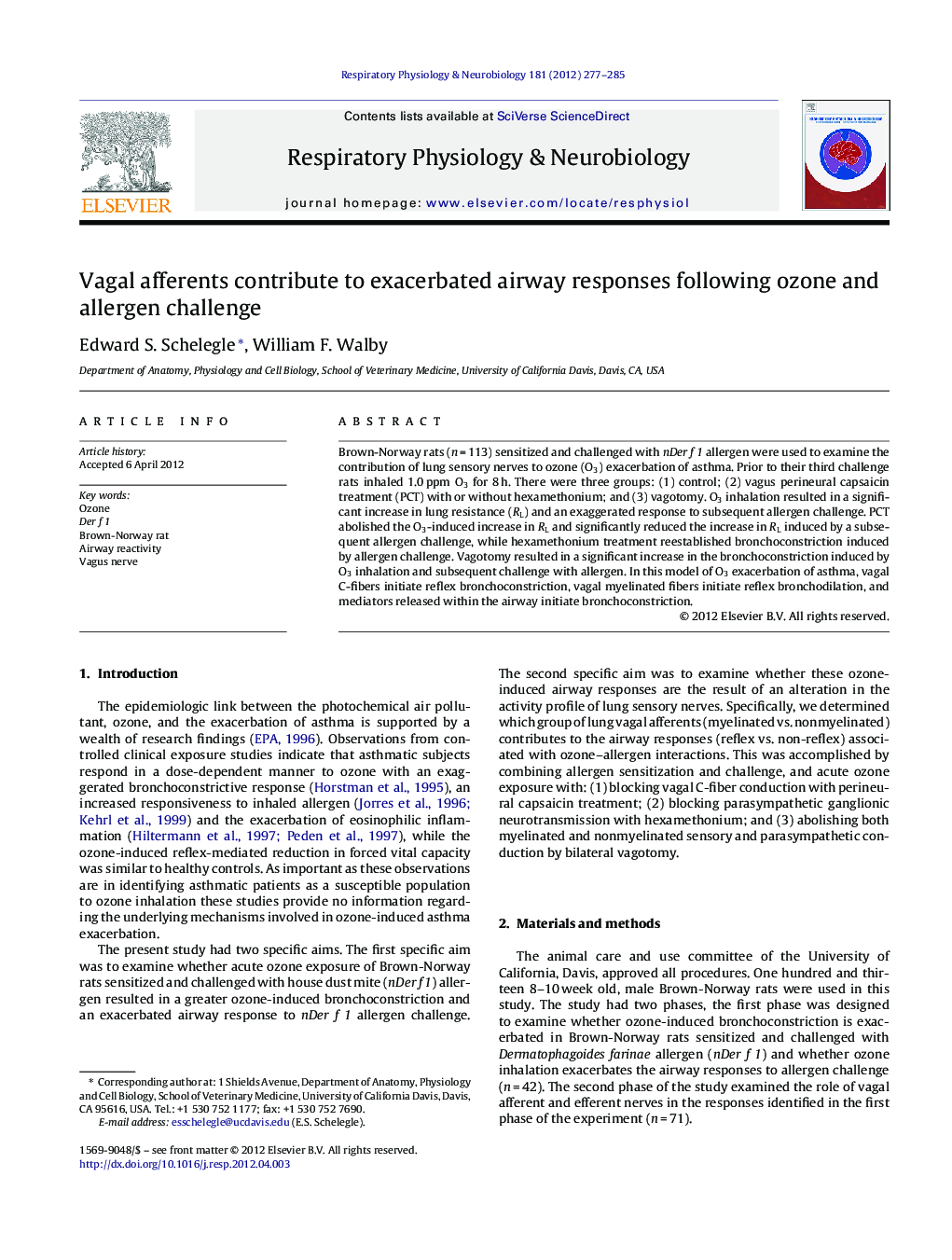| Article ID | Journal | Published Year | Pages | File Type |
|---|---|---|---|---|
| 2847374 | Respiratory Physiology & Neurobiology | 2012 | 9 Pages |
Brown-Norway rats (n = 113) sensitized and challenged with nDer f 1 allergen were used to examine the contribution of lung sensory nerves to ozone (O3) exacerbation of asthma. Prior to their third challenge rats inhaled 1.0 ppm O3 for 8 h. There were three groups: (1) control; (2) vagus perineural capsaicin treatment (PCT) with or without hexamethonium; and (3) vagotomy. O3 inhalation resulted in a significant increase in lung resistance (RL) and an exaggerated response to subsequent allergen challenge. PCT abolished the O3-induced increase in RL and significantly reduced the increase in RL induced by a subsequent allergen challenge, while hexamethonium treatment reestablished bronchoconstriction induced by allergen challenge. Vagotomy resulted in a significant increase in the bronchoconstriction induced by O3 inhalation and subsequent challenge with allergen. In this model of O3 exacerbation of asthma, vagal C-fibers initiate reflex bronchoconstriction, vagal myelinated fibers initiate reflex bronchodilation, and mediators released within the airway initiate bronchoconstriction.
► Brown-Norway rats sensitized and challenged with nDer f 1 allergen are a good model of ozone-induced exacerbation of specific airway reactivity. ► In this model of O3 exacerbation of asthma. ► Vagal C-fibers initiate reflex bronchoconstriction. ► Vagal myelinated fibers initiate reflex bronchodilation. ► Mediators released within the airway initiate bronchoconstriction.
